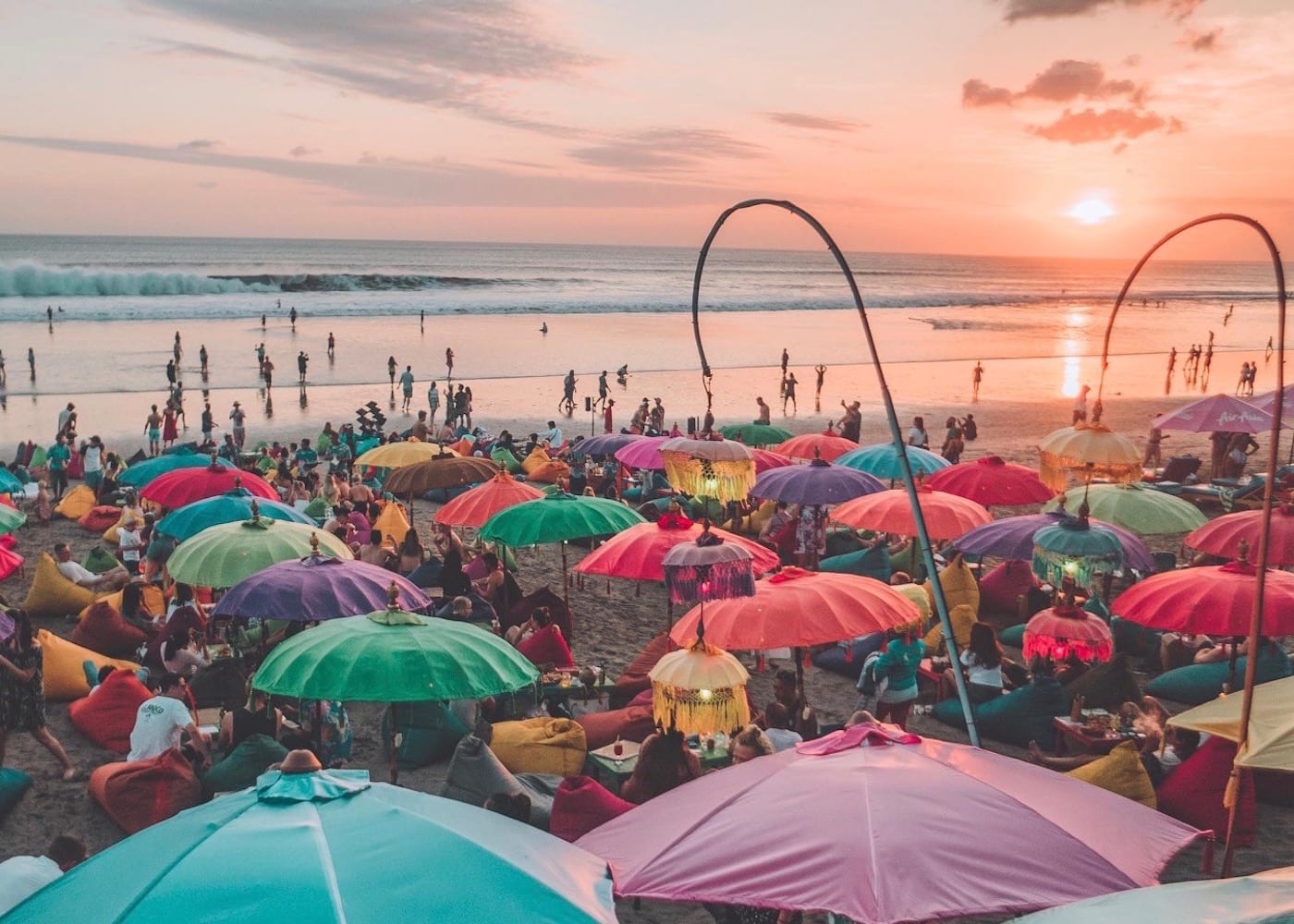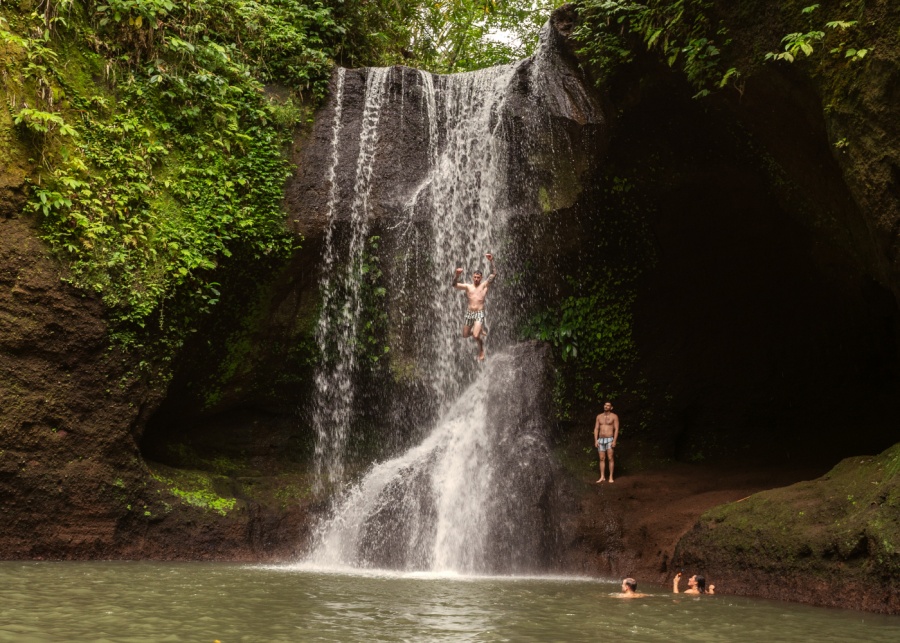
Bali isn't only about beautiful beaches and sunset cocktails. This paradise island is home to stunning waterfalls too - here are 20 of Bali's best waterfalls for your 2025 adventure!
If walking through dense jungle, clambering over rocks and ducking under lush green canopies is your kinda fun, then hunting for Bali’s best waterfalls needs to be on your Bali bucket list. Luckily for us adventurous souls, Bali is home to the most gorgeous waterfalls, many of which are off the beaten track and unbeknownst to the tourist crowds (picture-perfect Instagram feeds here we come!). So to help you on your next wet adventure, I’ve put together a list of the best waterfalls in Bali for you to discover. Go on, jump right in!
Watch the top 5 most accessible waterfalls in Bali
Bonus map: The 20 best waterfalls in Bali

The best waterfalls in CENTRAL BALI
1. Tegenungan Waterfall
Best for: Beginner-friendly trek and convenient location, with plenty of places to eat nearby.
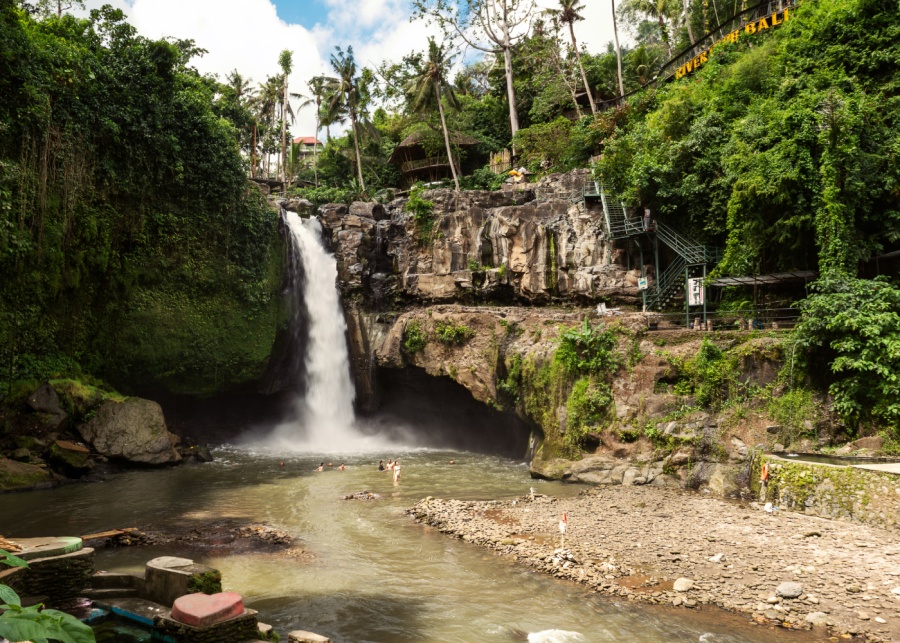
Tegenungan Waterfall is not situated in the mountains, which is quite rare for waterfalls in Bali. It actually sits within Ubud village. Like many others, it still boasts beautiful lush greenery all around, and the added bonus of a beautiful temple nearby.
Good to know: The best time to visit Tegenungan Waterfall is during the evening, since its west-facing location captures the beautiful afternoon light.
Local tip: Plenty of locals bathe and swim here, since the heavy flow from natural springs leaves the water clean and fresh.
Where: Tegenungan Waterfall is located near Sukawati, a village to the south of Ubud. It’s approximately 25 minutes away from Ubud Palace.
Find Tegenungan Waterfall on Google Maps
2. Kanto Lampo Waterfall
Best for: Instagram photo hunters because of its gorgeous backdrop.
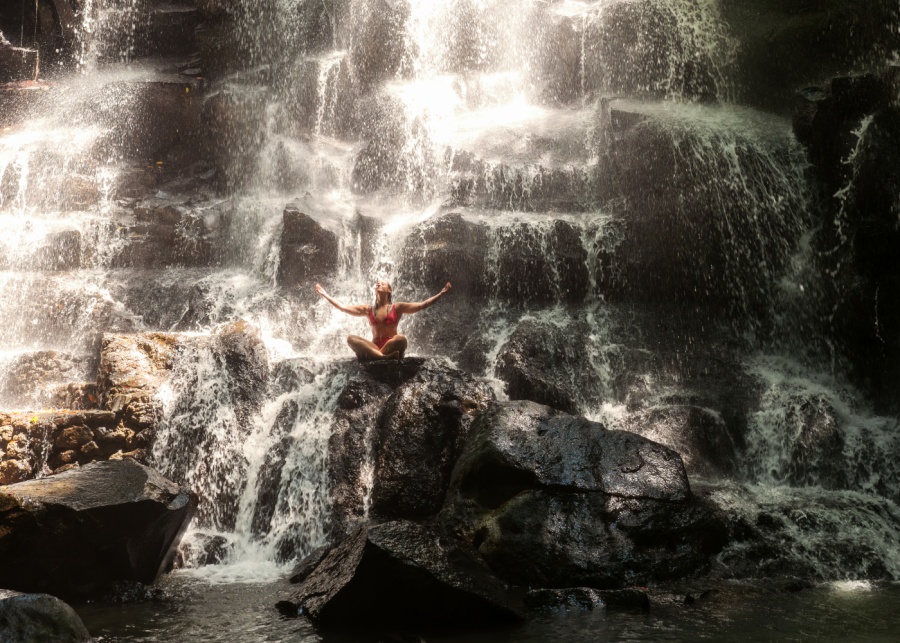
You’ve seen it on everyone’s Instagram feed – the beautiful terrace of white water, that’s Kanto Lampo Waterfall. Located in Beng Village in Gianyar, this natural beauty has attracted plenty of travellers because of its unique rock formation, water flow as well as the lush vegetation.
Kanto Lampo earned its name from the surrounding native trees with fruits that change colour from green, to yellow and finally red, throughout their lifecycle. The natural pool at the bottom of the waterfall is relatively small, making it a fun spot for a little dip in the freshwater!
Good to know: Due to its popularity, you may have to wait a while to take your Instagram shot.
Local tip: You’ll find plenty of facilities like a parking area, restrooms, changing rooms, and a cafe nearby.
Where: Kanto Lampo Waterfall is located in Gianyar, 30 minutes to the east of downtown Ubud.
Find Kanto Lampo Waterfall on Google Maps
3. Tibumana Waterfall
Best for: Secret swims in a large, natural pool.
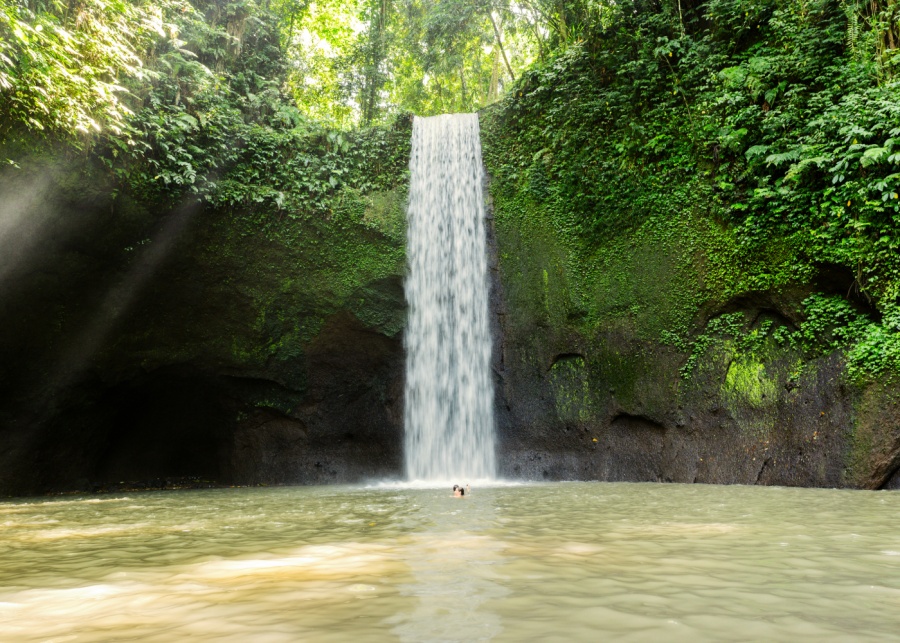
Let’s be honest: chasing waterfalls in Bali isn’t only about watching them from afar – we also want to dive in, swim around and make the most of the naturally refreshing waters. Well, Tibumana Waterfall is one of the very best for doing exactly that, thanks to its large pool of water at the base of a picture-perfect stream.
Good to know: The shallow pool is great for wading through and splashing around for hours.
Local tip: It takes just 10 minutes to walk to from the parking area, crossing bamboo bridges and palm-lined pathways.
Where: Tibumana Waterfall is located in Gianyar, near Ubud. It’ll take you approximately 35 minutes on a scooter from Ubud Palace.
Find Tibumana Waterfall on Google Maps
4. Tukad Cepung Waterfall
Best for: Breathtaking ray of lights, surrounded by trickling waters, rugged rocks and lush forests.
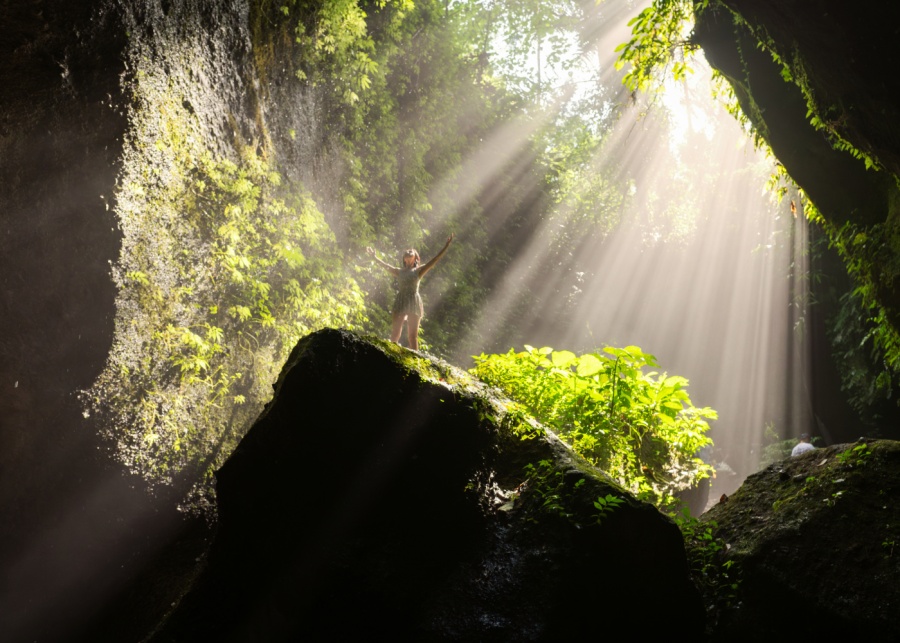
Every good photographer knows that lighting is everything, and Bali’s Tukad Cepung waterfall has got it down pat. It’s famous for its heavenly streams of light that burst through the rock and forest canopy right when the sun is at a certain point in the sky. The waterfall sits inside a ravine-like cove with a wall of water that rushes from the divine-like beams above – Tukad Cepung certainly knows how to work the camera.
Good to know: Like Kanto Lampo, Tukad Cepung has become quite the Instagram sensation, so it draws in big crowds.
Local tip: Tie it in with a trip to Tibumana Waterfall (above) – they are only 30 minutes away from each other by car.
Where: Tukad Cepung Waterfall is located halfway between Bangli and Sidemen Village.
Find Tukad Cepung Waterfall on Google Maps
5. Leke Leke Waterfall
Best for: those who love an off-the-beaten-path treasure hunt.

Full disclosure: I found Leke Leke Waterfall by accident. I’m glad I did, because it’s slightly off-the-beaten-path and often quieter compared to Bali’s other famous waterfalls. In fact, when I was there, I didn’t see a single other tourist (but I did visit very early in the morning!).
To get down to Leke Leke, you descend a slightly steep (but already carved) dirt track to the bottom of a lush valley. You’ll need to shimmy over a rickety bamboo bridge and through tropical jungle, but it’s not too treacherous. You’ll hear the falls before you see them, and when you do, you’ll spot the breathtaking surge of bright white water falling between a dramatic black cave.
Good to know: There’s a large rock at the forefront makes for the perfect perch to nab some Instagram shots. Meanwhile, the small pool of water at the falls’ base is great for a very refreshing dip.
Local tip: Get there very early in the morning, and you may just have the waterfall all to yourself!
Where: Leke Leke Waterfall is located 25 minutes south of Bedugul.
Find Leke Leke Waterfall on Google Maps
6. NungNung Waterfall
Best for: Beautiful treks with calming sounds of water crashing from high altitude.

Nine hundred metres above sea level in a small village in the middle of nowhere, lies NungNung Waterfall. Before you see it, you will most definitely hear it, with the thunderous sound of thousands of gallons of water crashing into a pool below. Once you’ve reached the bottom of the 509 steps (think of the workout you’re getting!) your eyes will get their first glimpse of the stunning fifty-metre-high waterfall. Cameras at the ready…
Good to know: The trek is quite lovely, through lush green rice paddies and plantations in every direction.
Local tip: The car park is easy enough to find, but once you get there, prepare for a long descent ahead.
Where: NungNung Waterfall is located in Petang, to the north of Payangan, a village on the outskirts of Ubud.
Find NungNung Waterfall on Google Maps
7. Goa Rang Reng Waterfall
Best for: Day trips for those staying near or in Ubud.

A hidden gem in Banjar GitGit (not to be confused with GitGit Waterfall!), Goa Rang Reng is quickly becoming one of the most popular waterfalls in Bali. As soon as you arrive, 600 metres down a slippery slope, you’re greeted with clear water surrounded by lush greenery, crashing down against the stones with beautiful growing moss. But what sets it apart is that Goa Rang Reng doesn’t just offer a stunning waterfall. In fact, you can find its namesake cave (AKA “goa”) where two rivers meet, making it one of the holy places in the area where water ceremonies often take place.
Good to know: As Goa Rang Reng Waterfall is close to Ubud, you could also visit Tegenungan Waterfall (above) on the same day.
Local tip: Don’t visit on a weekend or public holiday, as you may run into thousands of other travellers!
Where: Goa Rang Reng Waterfall is just 20 minutes to the east of downtown Ubud.
Find Goa Rang Reng Waterfall on Google Maps
The best waterfalls in NORTH BALI
8. Sekumpul Waterfall
Best for: A postcard-perfect backdrop with breathtaking views of waters trickling down, best captured from a distance.

Sekumpul Waterfall, located in the village of Sekumpul, is touted as the most beautiful waterfall in Bali. To see it up close requires a little bit of effort though, so this is one for dedicated adventurers. You can also hire a local guide to help you get there. But for those who don’t fancy an adventure, the good news is Sekumpul Waterfall is often best enjoyed from a distance so that you can see it in all its glory.
Good to know: It’s a tough trek, with a dirt road, lots of slippery steps and a small river crossing.
Local tip: Sekumpul Waterfall is actually made up of seven different falls that reach dizzying heights, so it’s best admired from a distance.
Where: Sekumpul Waterfall is about 50 minutes away from Bedugul. It’s located in Buleleng, North Bali.
Find Sekumpul Waterfall on Google Maps
9. Banyumala Twin Waterfall
Best for: Two waterfalls in one destination, complete with lush greenery and a plunge pool deep enough for swimming.
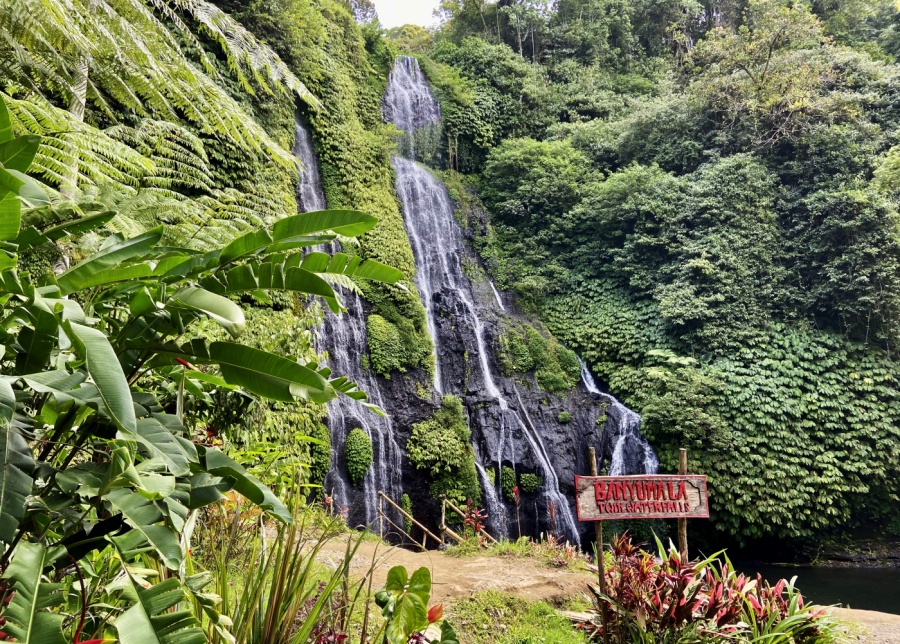
Hidden away in the hills of Wanagiri, Banyumala is a spectacular sight indeed. You don’t necessarily need a local guide to help show you around here, but there are a few slippery steps and a short trek to get to the base – but totally worth the hike. The waterfall is special in that there are two flows of water to be seen, with water cascading down steep rocks surrounded by gorgeous greenery. Here, you can take a refreshing dip in the plunge pool at the bottom – dunk your head and listen to the sounds of the water crashing down above. This is Mother Nature at her very best!
Good to know: You don’t need a guide here, as despite the slippery steps, the trek is short and the base is easy to find.
Local tip: Since it’s close to Bedugul, you can tie them into one day trip.
Where: Banyumala Twin Waterfall is a 10-minute drive north of Bedugul. It’s located in Buleleng area of North Bali.
Find Banyumala Twin Waterfall on Google Maps
10. Aling Aling Waterfall
Best for: Slipping and sliding into crystal-clear waters, before hopping to seven other nearby waterfalls.

Hey, adrenaline junkies – how does sliding down a thirty-five-metre waterfall sound? Yep, pretty awesome. Well, you can find this natural water slide at Aling Aling Waterfall, located in Sambangan village. With its inviting, crystal-clear plunge pool and shower-like spray, you’ll want to pack your bikini for this one. The waterfall falls from a steep cliff and is surrounded by lush jungle, so it’s just as beautiful if you simply want to admire from a distance.
Good to know: The journey to get here can be a little tiresome, with treks across rice fields and up and down many steps.
Local tip: Aling Aling is nearby to seven other waterfalls in northern Bali if you want to spend the day adventuring.
Where: Aling Aling Waterfall is located in Sambangan Village in Buleleng, North Bali.
Find Aling Aling Waterfall on Google Maps
11. GitGit Waterfall
Best for: Beginners, because it’s easy to access with a solid concrete path leading to the falls.

To whet your appetite and introduce you to Bali’s waterfall game, GitGit Waterfall in Singaraja (North Bali) is one of the easiest to find and reach by road. Because of its accessibility, GitGit has become one of Bali’s most famous tourist attractions, with refreshment stops and even countless arts and crafts shops lining the pathway that leads to the falls. The waterfall is about thirty-five metres high, surrounded by lush greenery, and if you’re really lucky, you might even spot wild monkeys hanging out in the trees and drinking from the falls.
Good to know: GitGit Waterfall is easy roach, with plenty of places to rest and shop along the way.
Local tip: Legend has it that couples who bathe together under the waterfall will separate soon after their visit… you have been warned!
Where: GitGit Waterfall is a 30-minute drive north of Bedugul. It’s located in Singaraja area of North Bali.
Find GitGit Waterfall on Google Maps
12. Yeh Mampeh Waterfall
Best for: All-in-one jungle adventures that include hiking, cave-exploring and swimming in unpolluted water.

Located in the small village of Les, Yeh Mampeh Waterfall is one of Bali’s tallest waterfalls. Hike down the falls, explore the nearby caves, swim in the clean fresh water, or just soak up the splendid views of the green hills whilst enjoying the cool, unpolluted air. Escape the hustle and bustle, and relax in this beautiful natural setting. You won’t regret it.
Good to know: With plenty of things to do in and around the waterfall, it’s worth spending a day here.
Local tip: Yeh Mampeh means “flying water” in Balinese, which suits its height.
Where: Yeh Mampeh Waterfall is located in Les Village in Buleleng, North Bali.
Find Yeh Mampeh Waterfall on Google Maps
13. Fiji Waterfall and Lemukih Water Slide
Best for: Trekking and tubing in a natural water slide.

Located in Lemukih Village, this one’s a whole day trip that’s full of action. For starters, the trek to Bali’s triple waterfall AKA Fiji Waterfall, includes a tour of the surrounding rice fields and plantation, as well as a stop at the Lemukih Water Slide. It’s a natural slide with flowing freshwater where you can hire a tube, and well, slide on down.
You can spend a good few hours here slipping and sliding, but be sure to leave enough time for your journey to the breathtaking Fiji Waterfall – a group of three waterfalls in one spot.
Good to know: If you still have time, you visit the nearby Sekumpul Waterfall.
Local tip: There’s a cafe by the parking area for those who want to take in the views from a distance.
Where: Fiji Waterfall and Lemukih Water Slide are located in Buleleng, North Bali. It takes about 45 minutes of scooter ride up north from Bedugul.
Find Fiji Waterfall on Google Maps
14. SingSing Waterfall
Best for: A romantic date in the outdoors.

If you’re heading to the north of Bali, you’ll want to make a pit-stop here. SingSing Waterfall is located in the Labuan Haji Temukus district, near Lovina. It has been touted as the most romantic waterfall in Bali, due to its calming and peaceful atmosphere. Sit among the natural surroundings with your lover, listen to the calm waters rippling down a cascade, or take a dip together in the fresh water.
Good to know: It’s one of the most romantic waterfalls in Bali, so you’ll want to bring a date here.
Local tip: The best time to visit is during the rainy season from December to March. During the dry season, the waterfall is reduced to only trickles.
Where: SingSing Waterfall is located about 10 minutes away from Lovina Beach in North Bali.
Find SingSing Waterfall on Google Maps
15. Munduk Waterfall
Best for: Those looking for the The Niagara Falls of Bali, that’s relatively easy to find via a winding pathway.

Nestled in the rainforest around Munduk Village in Buleleng, lies Munduk Waterfall – the Niagara Falls of Bali. Not only is the fifteen-metre high waterfall a jaw-dropping spectacle, but the area around it, with its two twin lakes, is also a stunner. With clove plantations, rice fields and the backdrop of Bali’s beautiful mountains all around, Munduk is a great place to find some inner peace.
Good to know: There are three falls in this area, with the most spectacular being Niagara Munduk which some visitors have compared to a film set.
Local tip: There is a restaurant here too, where you can enjoy some grub and a drink.
Where: Munduk Waterfall is located in Munduk Village, in the northern mountain area of Buleleng.
Find Munduk Waterfall on Google Maps
16. Blahmantung Waterfall
Best for: Slippery treks through coffee plantations, leading to a gorgeous, giant waterfall.

Like the aroma of coffee? Love bathing in fresh water? Head to Blahmantung Waterfall, nestled within the lush and undulating region of Tabanan, home to coffee plantations and rice fields for as far as the eye can see. One of Bali’s hidden treasures, this gorgeous waterfall is surrounded by beautiful green rainforest and requires a good 800-metre walk to get there – but it’s all SO worth it. At fifty metres high, Blahmantung is a giant. And what’s more, you can jump into the plunge pool below and enjoy one of Mother Nature’s true beauties.
Good to know: There are coffee plantations and rice fields nearby, if you’re looking to make a day out of it.
Local tip: The trek is by no means easy, especially during the rainy season when you should be wary of slippery rocks.
Where: Blahmantung Waterfall is located in Tabanan, towards the north-western area of Bali. A scooter ride from Canggu will take you about two hours, depending on the time of day.
Find Blahmantung Waterfall on Google Maps
17. Jembong Waterfall
Best for: Spiritual healing.

Not far from the ever-famous GitGit Waterfall (above), Jembong Waterfall is often overshadowed by its popular neighbour. But this is no bad thing. Its stunning and unspoiled, natural surroundings are simply magical. It is located in the Theobroma cacao area, so you walk amongst cacao trees to find it. The Jembong Waterfall has a gentle slope and water flow, again making it an ideal setting for healings, and of course bathing.
Good to know: The peaceful settings often attract those who want to find inner peace.
Local tip: Jembong Waterfall is known as the best waterfall in Bali amongst locals.
Where: Jembong Waterfall is located in Sukasada, Buleleng. It’s about 45 minutes north of Bedugul area.
Find Jembong Waterfall on Google Maps
18. Carat Waterfalls
Best for: Those who dare to discover haunted spots.

Carat Waterfalls (there are two here) are located close to the unspoiled village of Tamblang in Singaraja. To get there, you have to be ready for a bit of a tricky trek as the approximately 800 metre-long path includes a wobbly bamboo bridge and some steep cliffs to scale. There are two waterfalls here, a smaller and a larger one, plus a small pool at the bottom which is perfect for swimming.
Good to know: Best to leave the kids at home for this one, as the trek is tricky.
Local tip: Legend says that the Carat Waterfalls are haunted, and bad luck will be brought upon any visitor who says or thinks negative things about the falls.
Where: Carat Waterfall is located in Buleleng, North Bali. The scooter ride from Kintamani will take about an hour.
Find Carat Waterfalls on Google Maps
19. Kroya Watefall
Best for: Choosing your very own wet ‘n’ wild adventure.

Tucked away in Sambangan, this beauty isn’t just for gazing – it’s for jumping, sliding, and swimming! Like the nearby Aling Aling Waterfall (above), Kroya Waterfall is nature’s own adventure park, complete with crystal-clear pools, jungle vibes, and the ultimate adrenaline rush. And the main attraction? Its natural rock slide that sends you straight into the refreshing plunge pool below.
Good to know: Bring a floatie because the crystal-clear pools are perfect for floating and soaking up the lush surroundings.
Local tip: You can take a 5- or 10-metre cliff jump if you dare.
Where: Kroya Waterfall is located within the Sambangan Secret Garden area, where you’ll also find other beautiful waterfalls like Aling Aling Waterfall and Blue Lagoon.
Find Kroya Waterfall on Google Maps
The best waterfalls in EAST BALI
20. Peguyangan Waterfall in Nusa Penida
Best for: Island-hopping destination.

Now, this may not be a giant, water-crashing-down-for-miles kind of waterfall, but it is still fun to visit, especially if you fancy a free massage! Peguyangan Waterfall is a group of short fountains of water that fall over a steep ravine, eventually making their way into the sea surrounding the gorgeous island of Nusa Penida. Away from the ravine there are little pools of water to bathe in, letting the fast-flowing water ripple and bubble around you (AKA a free and all-natural massage!).
Good to know: To get to these falls, you’ll need to climb a narrow flight of steps that hug the ravine, so be prepared for almost five hundred steps.
Local tip: Bring a local friend, because it’s a bit of a hidden gem that’s not easy to find.
Where: Peguyangan Waterfall is located down the cliff of the southern area of Nusa Penida island.
Find Peguyangan Waterfall on Google Maps
Did I miss any? Send us a DM on Instagram or email me on louise@staging.thehoneycombers.com to share your favourites!
FAQs on visiting waterfalls in Bali
Is there an entrance fee for visiting the waterfalls in Bali?
Yes, many waterfalls have an entrance fee, typically ranging from IDR 10,000 to 20,000. This goes towards local maintenance efforts, and does not include guided tours.
What should I wear and bring when visiting waterfalls in Bali?
Wear comfortable clothing and sturdy footwear suitable for trekking. Don’t forget to bring swimwear, a towel, insect repellent and a waterproof bag to keep your belongings dry.
When is the best time to visit Bali’s waterfalls?
The ideal time is during the dry season, from April to October, when trails are less slippery, and water clarity is optimal. It’s also a good idea to check weather conditions beforehand.
Are there facilities like restrooms and eateries near the waterfalls?
Amenities vary by location – some popular waterfalls have basic facilities (think restrooms or changing rooms, and local eateries), while others in remote areas may not.
Are the trails to the waterfalls challenging?
Trail difficulty also varies – some waterfalls like Tegenungan Waterfall are easily accessible, while others like Sekumpul Waterfall require more strenuous hikes. Be sure to visit the ones suitable for your fitness level.
Love this list of Bali’s best waterfalls? Check out more awesome things to do outdoors in Bali!
